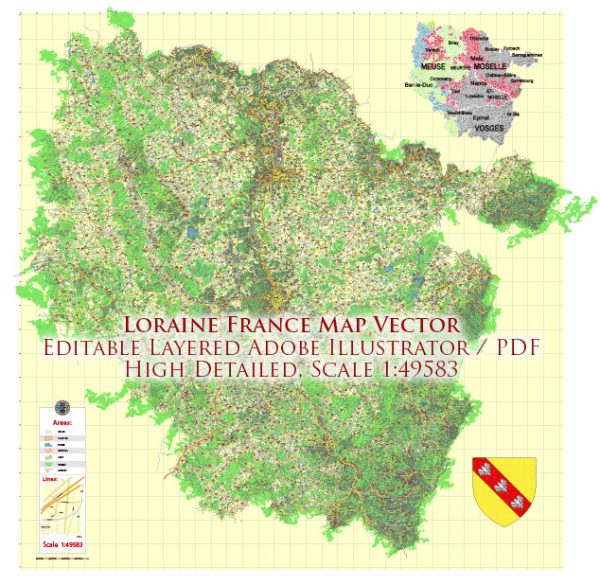Lorraine is a historic region located in northeastern France. It is known for its rich history, distinctive culture, and beautiful landscapes. Here are some key points about Lorraine:
- Location: Lorraine is situated in the northeastern part of France, bordering Belgium, Luxembourg, and Germany. The region is known for its strategic location, which has made it a historically significant area in Europe.
- History: Lorraine has a long and complex history, with periods of rule by various European powers. It was once part of the Holy Roman Empire, then later ruled by the Dukes of Lorraine. The region was often contested during European conflicts, including the Franco-Prussian War and both World Wars.
- Culture: Lorraine has a unique cultural identity influenced by its history and location. The cuisine in Lorraine is famous for dishes such as quiche Lorraine, pâté lorrain, and the mirabelle plum. The region is also known for its art, including the works of artists like Georges de La Tour.
- Geography: The region of Lorraine is characterized by diverse landscapes, including the Vosges Mountains in the west and the Lorraine Plateau to the east. There are many forests, lakes, and rivers, making it an attractive destination for outdoor activities and nature enthusiasts.
- Major Cities: Some of the major cities in Lorraine include Metz, Nancy, and Epinal. These cities have historical sites, museums, and cultural attractions that showcase the region’s heritage.
- Economy: Lorraine has a varied economy, with sectors such as industry, agriculture, and tourism playing important roles. The region is known for its steel industry and mining heritage, which has contributed to its economic development.
- Tourism: Lorraine is a popular destination for tourists interested in history, culture, and outdoor activities. Visitors can explore historic cities, cathedrals, and museums, as well as enjoy outdoor pursuits in the region’s natural surroundings.
Lorraine is a region that offers a blend of history, culture, and natural beauty. It has a unique place in French history and is known for its contributions to French cuisine and art.


 Author: Kirill Shrayber, Ph.D.
Author: Kirill Shrayber, Ph.D.